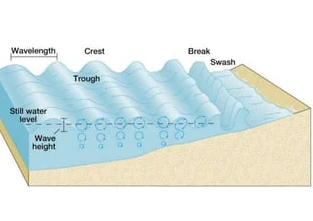Earth’s landforms are a complex and fascinating subject that has captivated scientists and geographers for centuries. In the field of physical geography, researchers seek to understand the processes that shape the Earth’s surface and create the diverse range of landforms that we see today.
The forces of nature
From towering mountains to sprawling plains, Earth’s landforms are the result of a combination of geological processes and external forces such as weathering and erosion. These processes act over millions of years to sculpt the landscape and create the unique features that we see on the planet today.
The power of water
One of the most important forces shaping Earth’s landforms is water. Rivers, streams, and oceans play a crucial role in eroding rocks and shaping the Earth’s surface. The Grand Canyon, for example, was formed over millions of years by the erosive power of the Colorado River, carving out a vast canyon in the Arizona desert.
The impact of tectonics
The movement of Earth’s tectonic plates also plays a significant role in shaping the planet’s landforms. When two plates collide, they can create massive mountain ranges such as the Himalayas or the Andes. When plates move apart, they create rift valleys and ocean basins. These tectonic forces are responsible for many of the world’s most iconic landforms.
The role of glaciers
Glaciers are another important force shaping Earth’s landforms. These massive sheets of ice can carve out valleys, create U-shaped valleys, and leave behind a trail of moraines and glacial lakes. The stunning landscapes of Patagonia and the fjords of Norway are just a few examples of the impact of glaciers on the Earth’s surface.
Understanding Earth’s landforms is a key part of physical geography, helping us to unravel the mysteries of the planet’s past and predict its future. By studying the forces of nature, the impact of water, tectonics, and glaciers, we can gain a deeper appreciation for the intricate and ever-changing landscapes that make up our world.

